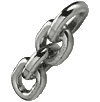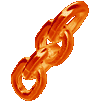
With a proposed project that would increase the number of trains going through Tehachapi, some residents have asked about the use of a "Quiet Zone" through town to reduce noise.
Federal safety rules require train operators to blow the horn about a quarter-mile before entering a crossing.
The sound of these horns at all hours of the day and night tend to upset some people and with the possibility of double tracking on the hill it could get worse but is a quiet zone a viable answer.
Local jurisdictions such as the city are allowed to basically opt out of the blaring train horns, through the creation of a "Quiet Zone", but it is not a simple proposition.
Establishing quiet zones not only creates a public safety risk but also is a potential cost burden to taxpayers.
Public authorities are responsible for the cost of preliminary engineering, construction, maintenance, and replacement of active warning devices or their components, including wayside horn systems installed at crossings to meet quiet zone standards.
"Creating a quiet zone would cost significant amounts of money. The trick is trying to find some money, somewhere, that would assist us. Bakersfield went through this process a couple of years ago and it was long, painful, and expensive," said Tehachapi City Manager Greg Garrett.
There are divergent views on the value of train horns.
"One camp says horns are good. Like the Harley Davidson group says, loud pipes save lives, and there is some logic to that. Except we have some train engineers that just lay on the horn. I know there's a rule about warning signals, but some engineers can become very liberal with the horn. It's something that we're very aware of," Garrett noted.
Garrett said that the fact that trains are intermittent is also an issue.
"Train traffic through here is not like a scheduled passenger train where you know when they're going to come. There's no schedule for freights. Sometimes at night you get a lot of noise and vibration from the trains. It's hit and miss," he said.
How To
Based on federal regulations, local government agencies may restrict the usage of train horns at railroad crossings which meet specified criteria.
The crossings are then considered to be within a "Quiet Zone".
On approach to such crossings train locomotives are not required to sound their horns.
The Federal Railroad Administration's, Rail Crossings Engineering Section (RCES), reviews notices of intent, establishment, or continuation of Quiet Zones, and provides written comments to local authorities, focusing on safety concerns related to the potential for collisions between trains and the public.
In general terms, a Quiet Zone may be established after implementing safety improvements that provide the same level of risk reduction as would otherwise be provided by the train horn.
The rule provides a step-by-step process to determine what can be done to offset the lack of a train horn, to calculate the risk reduction associated with potential improvements, to formally document the silencing of the train horns, and officially establish a Quiet Zone.
The California Public Utilities Commission also requires that its engineers evaluate the safety of rail crossings and review all proposed construction or pathways crossing railroad or rail transit tracks.
Under the Train Horn Rule, RCES is required to participate in diagnostic reviews of crossings in the proposed Quiet Zone and makes recommendations for safety enhancements in lieu of the train's sounding of their horn.
As opposed to a horn, a quiet zone uses other safety measures.
The Federal Railroad Administration requires those safety additions because evidence showed an increase in accidents when horns weren't used.
The improvements, which are dictated by federal guidelines, will include sidewalks and fences to keep pedestrians out of the railroad right-of-way, long, raised medians to prevent cars from driving around lowered gates, signs to alert people that no horn will sound, and double gates at a few locations.
Public authorities are required to execute a preliminary engineering agreement to reimburse the railroad for all project development and engineering design costs.
Such costs are high, implementation of a Quiet Zone plan for the city of Riverside cost US$7.7 million.
Because Tehachapi has only three surface crossings, the cost would be less here, probably in the neighborhood of US$2 million according to Union Pacific estimates.
City Concerned
The city is very concerned about "We're very concerned about this double tracking project. It's down to the west of us, but does impact us with the noise levels. In our response to the double tracking Draft Environmental Impact Report (DEIR) submitted by the California Department of Transportation we noted the noise and vibration issues related to the trains. We're working very hard on this process. We take this very seriously," Garrett said.
Ed Gordon.
provisions in Section 29 of the Canadian
Copyright Modernization Act.










